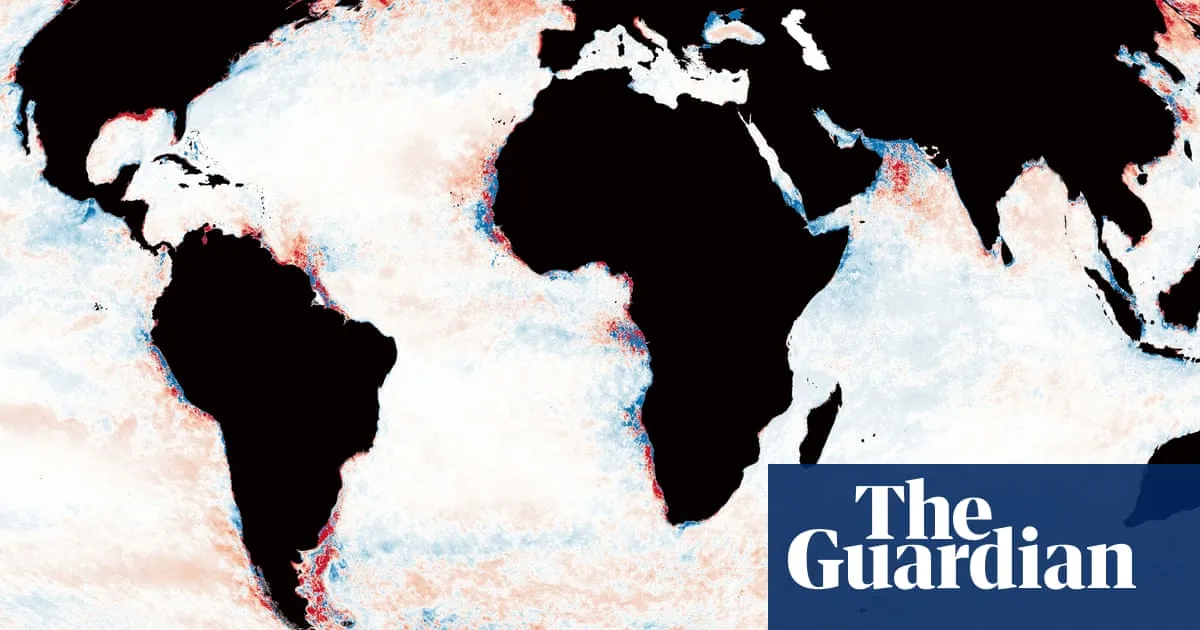
Recent research reveals that great swathes of the planet’s oceans have significantly darkened over the past two decades, raising alarms among scientists regarding the potential impacts on marine life worldwide. Utilizing satellite data and numerical modeling, researchers discovered that more than a fifth of the global ocean, equivalent to an area larger than Europe, Africa, China, and North America combined, has exhibited a decrease in light penetration from 2003 to 2022.
This darkening phenomenon affects approximately 75 million square kilometers (30 million square miles) of ocean, particularly disturbing the upper layers of water—known as the photic zone—where 90% of marine species thrive. Dr. Thomas Davies, a marine conservationist at the University of Plymouth, expressed that these findings represent a “genuine cause for concern,” as they could have severe implications for marine ecosystems, global fisheries, and the vital turnover of carbon and nutrients within the oceans.
Most marine life flourishes in the photic zones of the world’s oceans, which are the surface layers that allow enough light for organisms to thrive. While sunlight can penetrate up to a kilometer beneath the surface, in practice, little light reaches beyond 200 meters. This upper band of water is home to microscopic plant-like organisms called phytoplankton, which are essential to nearly all marine food webs and contribute to nearly half of the planet’s oxygen supply. Many fish, marine mammals, and other creatures depend on the warmer waters of the photic zones for feeding, hunting, and reproduction.
In their study published in Global Change Biology, Davies and his team used satellite data along with an algorithm to measure light in seawater, revealing that darkening affected 21% of the global ocean in the two decades leading up to 2022. Alarmingly, in 9% of the ocean, the photic zones became 50 meters shallower, while in 2.6% of the ocean, they were found to be 100 meters shallower. This trend of darkening indicates that light is increasingly struggling to penetrate the water.
The darkening effect is often noticeable along coastlines where cold, nutrient-rich water upwells and where rainfall transports nutrients and sediments from land into the ocean. However, the reasons for darkening far offshore remain less understood. It is believed that global warming and alterations in ocean currents could contribute to this troubling trend. Dr. Davies noted, “The areas where there are major changes in ocean circulation, or ocean warming driven by climate change, seem to be darkening, particularly in regions like the Southern Ocean and along the Gulf Stream past Greenland.”
Interestingly, despite the overall trend of darkening, about 10% of the ocean, or 37 million square kilometers, has actually become lighter in the past 20 years. For instance, a large section off the west coast of Ireland has shown signs of brightening, though areas further offshore have darkened considerably. This variation indicates that while some regions may benefit, many others face serious challenges.
“Marine organisms utilize light for a variety of critical functions, including hunting, mating, and timing reproductive events,” explained Dr. Davies. “With the ocean darkening, these organisms are forced to move towards the surface, leading to overcrowding in the photic zone.” This shift can disrupt the natural balance of marine life and complicate their biological processes.
Prof. Oliver Zielinski, director of the Leibniz Institute for Baltic Sea Research in Germany, highlighted that the darkening of vast ocean areas represents a “worrying trend.” He emphasized that such changes can disrupt marine food webs, alter species distributions, and diminish the ocean's ability to sustain biodiversity and regulate climate. “Coastal seas, being closest to human activity, are particularly vulnerable, and their resilience is crucial for both ecological health and human wellbeing,” Zielinski asserted.
As this research underscores, the darkening of the oceans is not merely a phenomenon to observe; it poses significant risks to marine habitats, global fisheries, and climate regulation, necessitating immediate attention and action from the global community.